Full text
PDF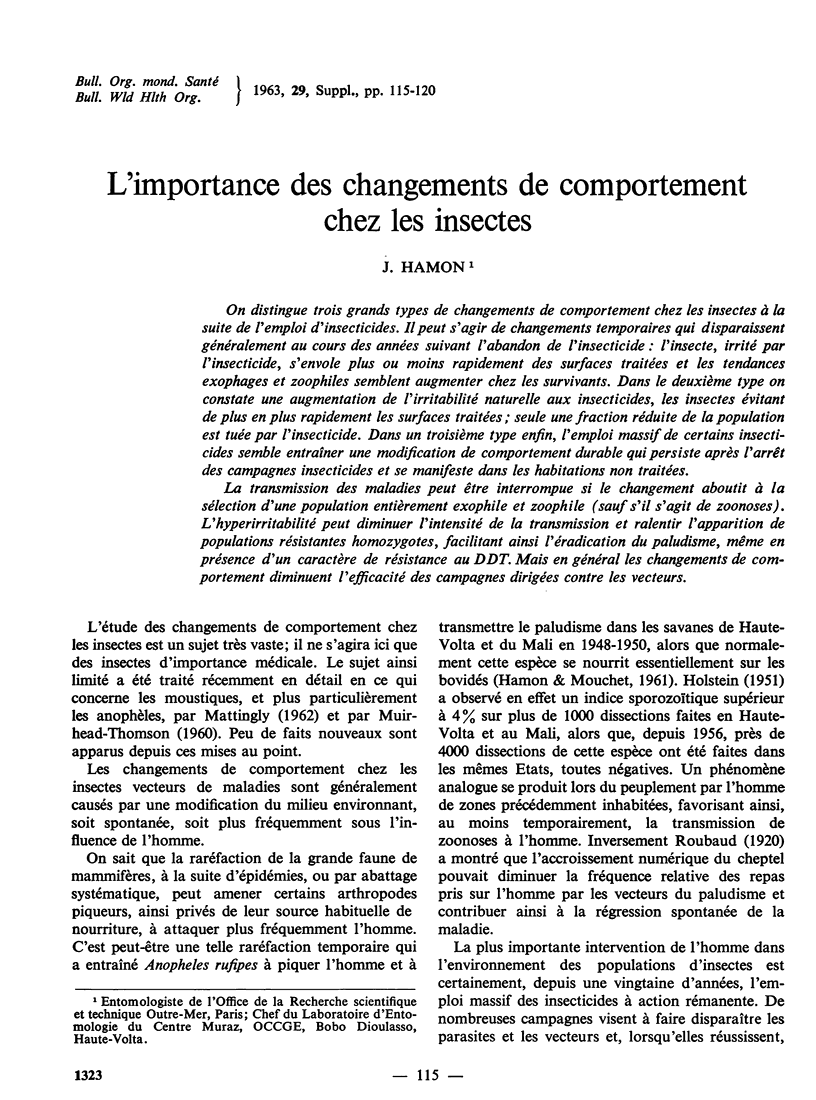
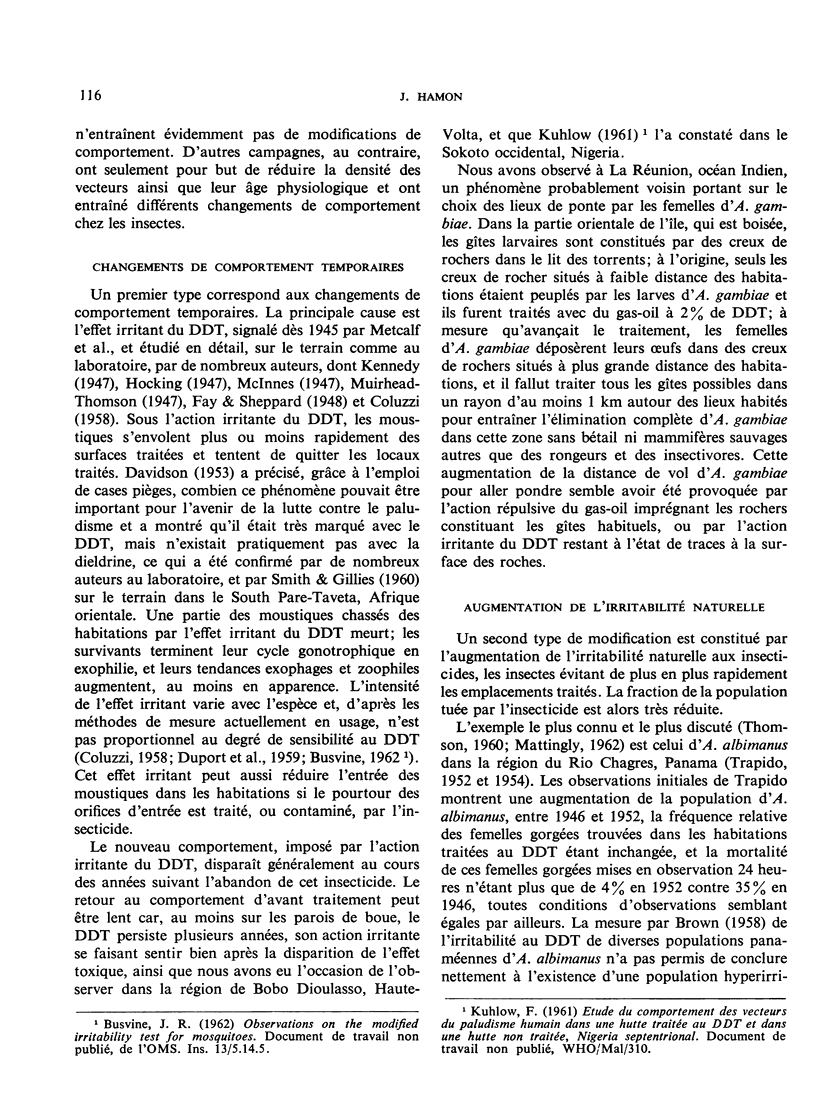
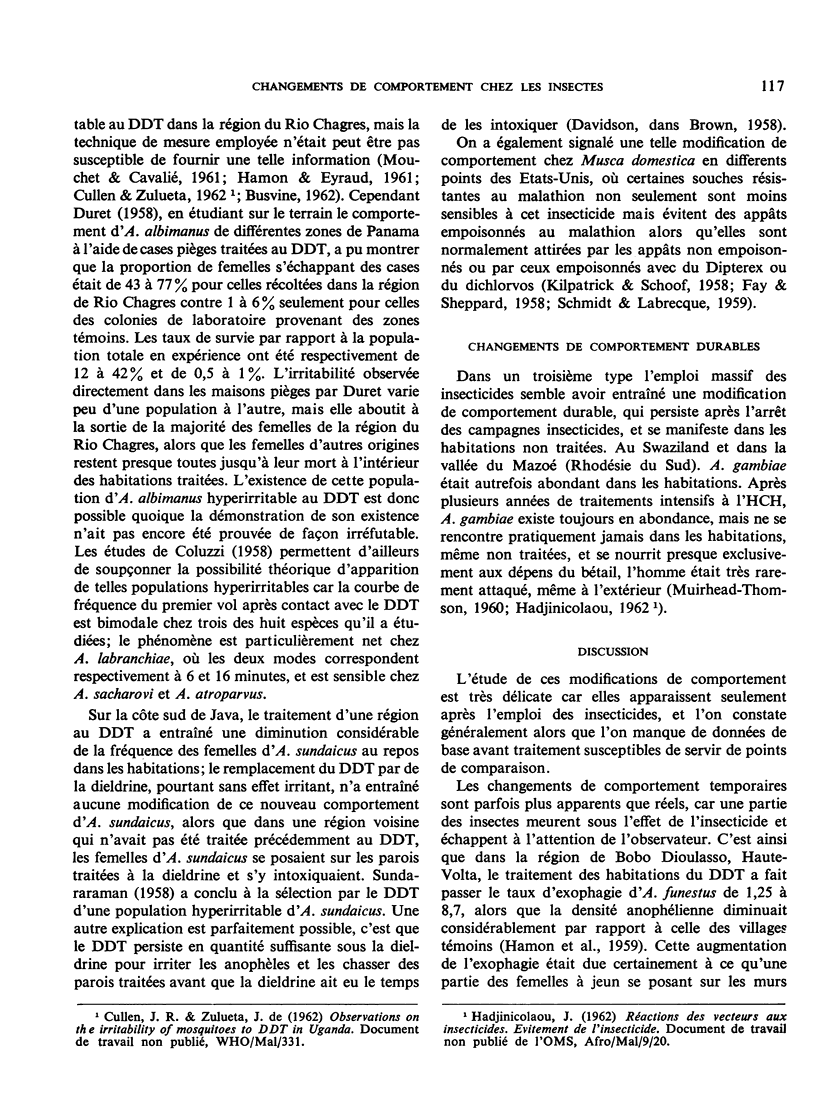
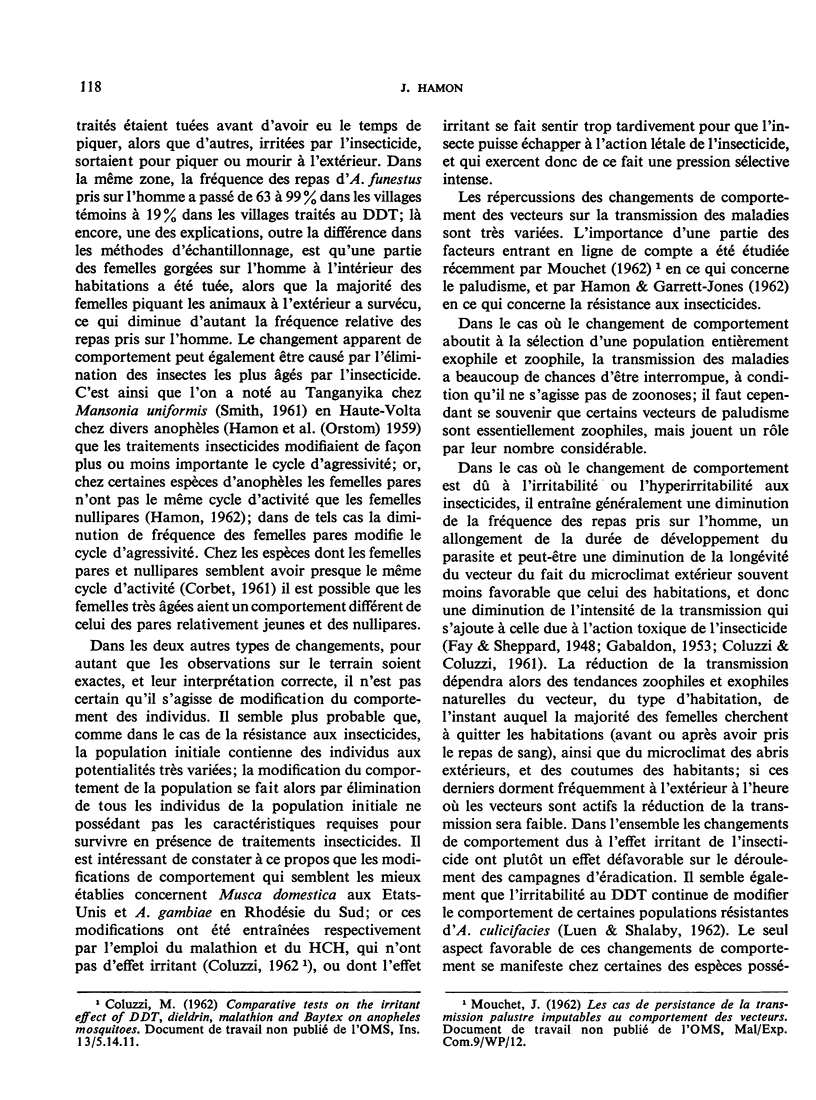

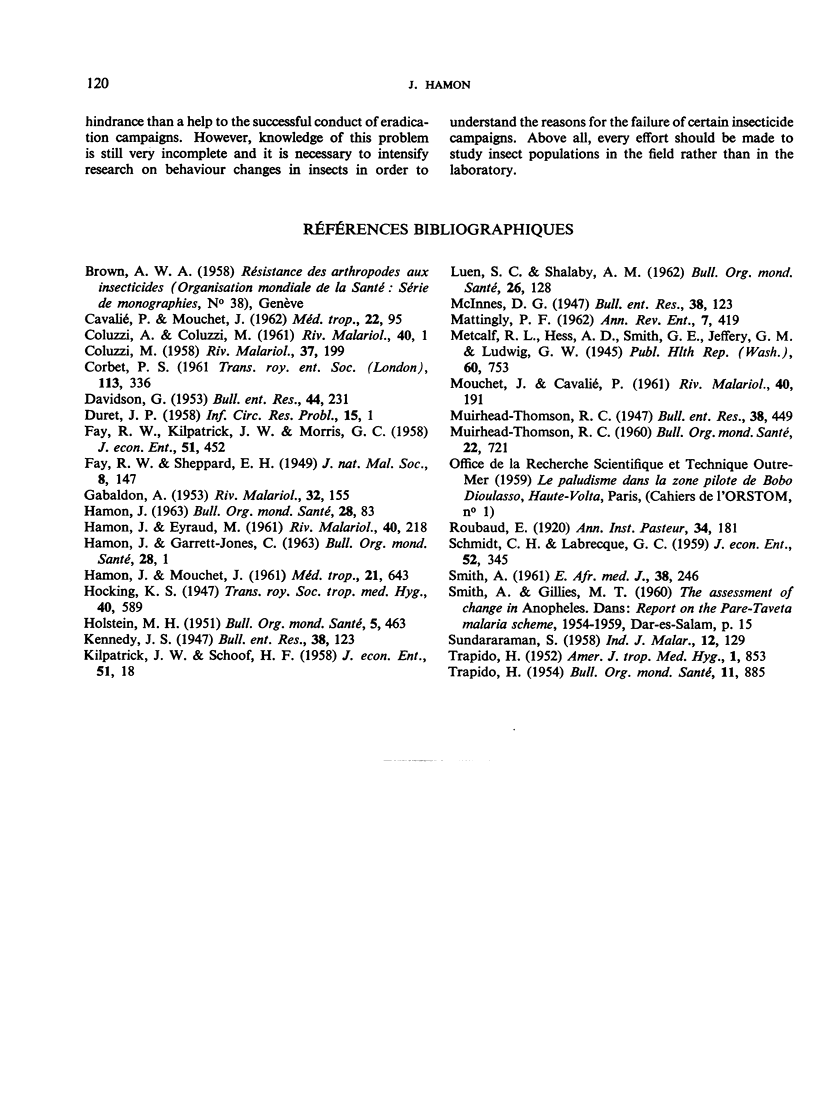
Selected References
These references are in PubMed. This may not be the complete list of references from this article.
- CAGALDON A. Possible effects of residual insecticides on the interruption of malaria transmission. Riv Malariol. 1953 Dec;32(4-6):155–171. [PubMed] [Google Scholar]
- COLUZZI M. Dati sperimentali sulla irritabilità di diverse specie di anofeli a contatto con pareti trattate con D. D. T. Riv Malariol. 1958 Dec;37(4-6):199–228. [PubMed] [Google Scholar]
- FAY R. W., SHEPPARD E. H. Anopheles quadrimaculatus activity patterns in the laboratory on untreated and DDT-treated surfaces. J Natl Malar Soc. 1949 Jun;8(2):147–158. [PubMed] [Google Scholar]
- GOKBERK C. The results of three years of Dieldrin application in a malarious area Adana-Turkey. Riv Malariol. 1961 Jun;40:1–8. [PubMed] [Google Scholar]
- HAMON J., MOUCHET J. [Secondary vectors of human malaria in Africa]. Med Trop (Mars) 1961;21(SPECIAL):643–660. [PubMed] [Google Scholar]
- LUEN S. C., SHALABY A. M. Preliminary note on the development of DDT-resistance in Anopheles culicifacies Giles in Panchmahals District, Gujerat State, India. Bull World Health Organ. 1962;26:128–134. [PMC free article] [PubMed] [Google Scholar]
- MATTINGLY P. F. Mosquito behaviour in relation to disease eradication programmes. Annu Rev Entomol. 1962;7:419–436. doi: 10.1146/annurev.en.07.010162.002223. [DOI] [PubMed] [Google Scholar]
- MUIRHEAD-THOMSON R. C. The significance of irritability, behaviouristic avoidance and allied phenomena in malaria eradication. Bull World Health Organ. 1960;22:721–734. [PMC free article] [PubMed] [Google Scholar]
- TRAPIDO H. Modified response of Anopheles albimanus to DDT residual house spraying in Panama. Am J Trop Med Hyg. 1952 Sep;1(5):853–861. doi: 10.4269/ajtmh.1952.1.853. [DOI] [PubMed] [Google Scholar]


